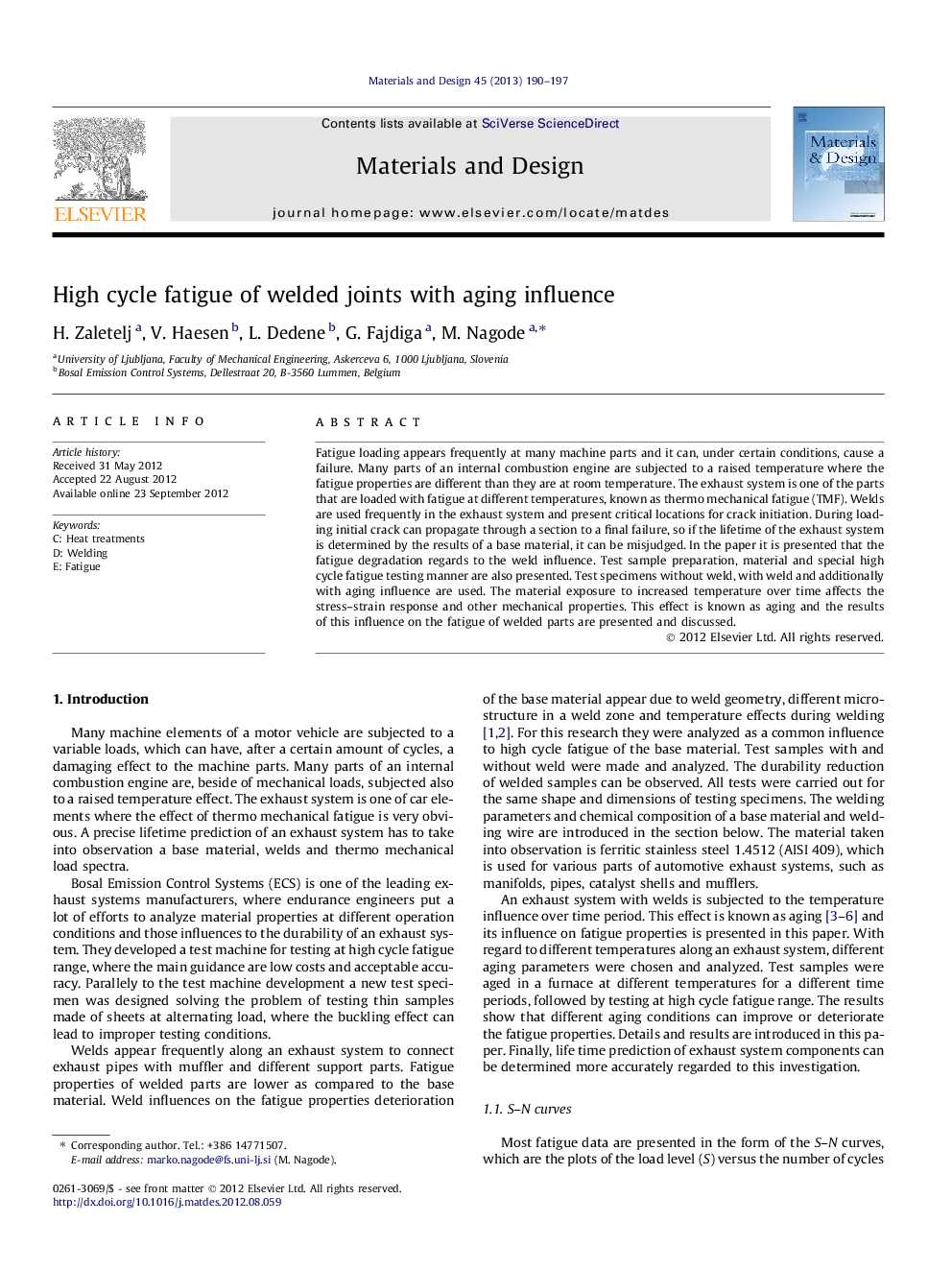| Article ID | Journal | Published Year | Pages | File Type |
|---|---|---|---|---|
| 830240 | Materials & Design (1980-2015) | 2013 | 8 Pages |
Fatigue loading appears frequently at many machine parts and it can, under certain conditions, cause a failure. Many parts of an internal combustion engine are subjected to a raised temperature where the fatigue properties are different than they are at room temperature. The exhaust system is one of the parts that are loaded with fatigue at different temperatures, known as thermo mechanical fatigue (TMF). Welds are used frequently in the exhaust system and present critical locations for crack initiation. During loading initial crack can propagate through a section to a final failure, so if the lifetime of the exhaust system is determined by the results of a base material, it can be misjudged. In the paper it is presented that the fatigue degradation regards to the weld influence. Test sample preparation, material and special high cycle fatigue testing manner are also presented. Test specimens without weld, with weld and additionally with aging influence are used. The material exposure to increased temperature over time affects the stress–strain response and other mechanical properties. This effect is known as aging and the results of this influence on the fatigue of welded parts are presented and discussed.
► High cycle fatigue results are presented as the bending moment vs. number of cycles. ► A special design of a test tube ensures that the buckling effect is prevented. ► Six flatten specimens are simultaneously tested with fully reversed loading. ► The weld influence on fatigue of AISI 409 is pronounced at lower load levels. ► Different aging conditions can improve or deteriorate the fatigue properties.
